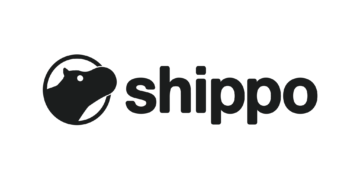What if your social enterprise could unlock early-stage capital while proving its impact? Many mission-driven startups struggle to attract investors, yet the right approach transforms challenges into opportunities. Only 12% of social ventures secure institutional backing, making strategic preparation essential.
Balancing profit and purpose requires a compelling narrative that resonates with impact-focused investors. Traditional startups often prioritize scalability, but social ventures must demonstrate measurable community benefits alongside financial sustainability. This dual focus demands clear metrics and a scalable business model.
Successful founders align their pitch with investor priorities. They showcase traction, like consistent growth or pilot results, while highlighting long-term potential. Tools like AngelList and SeedInvest help bridge the gap between innovators and backers.
Key Takeaways
- Early-stage capital is vital for product development and market expansion.
- Impact investors seek ventures with clear financial and social returns.
- Demonstrating traction increases credibility and attracts funding.
- A scalable model ensures long-term growth and investor confidence.
- Strategic storytelling connects mission with market potential.
What Is Seed Funding and Why It’s Unique for Social Businesses
Early-stage capital fuels both innovation and measurable change in mission-driven ventures. Unlike traditional startups focused solely on profit scaling, social enterprises validate their business model through dual-bottom-line results. The average seed round of $3.6 million supports product development and impact proof points.
Defining Seed Funding in the Social Impact Space
Seed rounds for social businesses prioritize measurable social impact alongside financial viability. Over half of impact investors require ESG (Environmental, Social, Governance) metrics before committing capital. Ventures like Bethnal Green Ventures showcase this shift, with 60% of their portfolio led by underrepresented founders.
Structural differences matter. B Corp certification often becomes a prerequisite, ensuring alignment with ethical standards. Mission-locked equity structures further protect social goals, a rarity in conventional startups.
How Social Businesses Differ from Traditional Startups
European data reveals social enterprises raise 37% less capital than tech counterparts, highlighting systemic gaps. Investors evaluate traction differently—pilot outcomes and community engagement often outweigh pure revenue growth.
DEEP Ecosystems’ research underscores the challenge: only 0.2% of total VC funding reaches social ventures. Yet, those securing investment demonstrate scalable solutions to pressing global issues, from climate action to equitable education.
Why Seed Funding Matters for Social Entrepreneurs
Strategic capital injection propels impact-focused startups toward scalable solutions. Early-stage resources enable pilot programs tied to UN Sustainable Development Goals (SDGs), turning ideas into measurable outcomes. Ventures with seed backing achieve 68% faster growth in community impact.
Norrsken VC exemplifies this approach, funding climate tech prototypes that reduce carbon emissions. Their model prioritizes ventures with clear impact metrics, like carbon offset tracking. Over 82% of impact investors view seed-stage alignment as critical for long-term mission success.
Lumo’s clean energy project demonstrates the ripple effect of early funding. Crowdfunding 200% above target, they attracted follow-on grants from PRIs (Program-Related Investments). This catalytic effect multiplies resources for ventures proving their model.
Tilia Impact Ventures in Czech Republic builds business resilience through impact measurement frameworks. Seed capital lets founders track social returns alongside revenue, a dual focus that appeals to later-stage investors.
Early capital also strengthens partnerships. Ashoka and Echoing Green connect funded ventures with mentors, amplifying their market reach. These networks transform underutilized assets—like abandoned factories—into hubs for economic and social change.
How to Get Seed Funding for a Social Business: Key Steps
Blended financing strategies bridge the gap between social goals and investor expectations. Over 73% of successful ventures combine grants, equity, and debt to fuel their growth. This approach balances mission integrity with financial viability.
Start by mapping a seven-step process from theory of change to term sheets. Platforms like Bolsa Social provide checklists for equity crowdfunding, ensuring transparency. Highlight measurable impact metrics—42% more than traditional pitch decks demand.
Fifth Wall’s valuation matrix helps real estate startups quantify social returns. Pair this with legal structures like L3Cs or Benefit Corporations to protect your mission. These frameworks appeal to investors prioritizing both profit and purpose.
Aspiration Bank’s due diligence criteria reveal key priorities for eco-projects. Demonstrate traction through pilot results or community engagement. Convertible notes paired with grants offer flexible capital without diluting ownership early.
Finally, align your business model with investor timelines. Impact-focused backers often seek longer horizons. Show how each dollar amplifies change, blending financial and social returns seamlessly.
Signs Your Social Business Is Ready for Seed Funding
Mission-driven ventures reach a critical juncture when early traction signals readiness for investment. Investors seek proof that your startup solves real problems while showing scalable potential. Below are the benchmarks that separate promising ventures from unproven ideas.
Proof of Problem-Solution Fit
Validate your impact with quantifiable results. Cooperativa de Energie, for example, onboarded 1,200 members before securing capital. This demonstrated market demand for renewable energy cooperatives.
Impact investors prioritize ventures serving at least 200 beneficiaries. Tools like UserTesting.com gather customer feedback to refine your product. Clear problem statements paired with testimonials increase credibility.
Demonstrable Traction and Growth Metrics
Pitchdrive’s research shows 10% weekly growth attracts 83% of impact angels. InsuResilience Fund sets benchmarks like disaster preparedness training completion rates. These data points prove scalability.
Balance social ROI with financial metrics. CAC/LTV ratios reveal revenue sustainability. GOTEO’s crowdfunding thresholds show validation—$50,000+ signals donor confidence in your model.
Avoid the pitfall of 67% failed startups: track impact metrics rigorously. Show how your product aligns with SDGs to stand out in a competitive market.
Preparing to Raise Seed Capital: A Checklist
Investors seek ventures where numbers and narratives create shared value. A structured approach ensures your social enterprise stands out. Below, we outline critical steps to align financial and impact goals.
Crafting a Compelling Social Impact Narrative
Start with a framework that connects pain points to measurable change. Ventures aligned with UN SDGs raise 2.3x more capital. Use IRIS+ metrics to quantify outcomes, like Energy4All’s community share offers.
Demeter Fund’s KPIs show how ecological transitions attract investors. Balance emotional storytelling with data—highlight beneficiary testimonials alongside growth metrics.
Building a Financial Plan That Appeals to Investors
91% of impact VCs require 3-year projections. Erste Bank’s templates help model cash flow, blending program-related and earned revenue. Clarity here builds trust.
Show scalability. Convertible notes with grants offer flexible capital without diluting equity early. Present exit strategies to reassure investors about long-term returns.
Finally, validate assumptions. Pilot results and pre-orders signal market fit. This dual focus—financial viability and social proof—fuels sustainable growth.
Sources of Seed Money for Social Enterprises
Multiple pathways exist for mission-driven ventures to secure initial financial support. Each option balances risk, control, and alignment with social goals. The right mix depends on your growth stage and impact metrics.
Angel Investors and Impact-Focused VCs
Individual backers often provide capital and mentorship during early stages. Networks like Investors’ Circle connect ventures with investors who value both returns and community impact.
Bridges Fund Management demonstrates this approach, deploying £12 million since 2008. Their quasi-equity model shows how mission-aligned funding structures work. Techstars’ sustainability accelerator offers similar support with structured mentorship.
Crowdfunding Platforms for Social Good
Bolsa Social proves the power of collective backing, financing 47 ventures through equity crowdfunding. Reward-based models like Consolid8 engage communities while validating market demand.
These platforms democratize access to capital. They allow small donors to participate in social change while providing ventures with early adopters and feedback.
Grants and Government Programs
The EU’s EaSI program offers €500,000 for social innovation, targeting scalable solutions. National initiatives like the US Small Business Administration provide matching grants for community projects.
Esmée Fairbairn Foundation illustrates how philanthropic programs complement traditional funding. Their £35 million portfolio supports diverse ventures tackling systemic challenges.
Angel Investors vs. VCs: Choosing the Right Path
Mission-driven founders face a critical choice when selecting early backers: angels or venture capitalists. Each brings distinct advantages to impact ventures. Investors in these categories differ in check sizes, decision speed, and strategic support.
Angel networks typically deploy €50,000-€100,000, prioritizing mentorship and quick decisions. Kima Ventures exemplifies this, funding startups within three weeks. Conversely, impact venture capital firms like 500 Global invest €2M+, focusing on scalable growth over six-month evaluations.
The value-add differs significantly. Angels provide hands-on guidance through personal networks. Atomico’s approach contrasts sharply, offering institutional scaling expertise. Local syndicates often balance both, as seen with Berlin’s Impact Angels.
Term sheets reveal philosophical divides. Mission-aligned equity agreements may include board seats to protect social goals. Funds like Bridges Ventures use quasi-equity models, blending financial returns with impact safeguards.
Choose based on your venture’s stage and needs. Early prototypes benefit from angel flexibility, while scaling requires VC capital and systems. Align your funding path with both financial targets and impact milestones.
Crowdfunding Your Social Business: Strategies That Work
Collective backing through digital platforms accelerates impact-driven initiatives. Social ventures now raise 217% above targets by leveraging community support. This approach democratizes access to funding while validating market demand.
Four models dominate impact crowdfunding. Donation-based campaigns like GOTEO’s funded 600+ EU projects through pure philanthropy. Equity platforms such as Bolsa Social enable community members to become shareholders, blending returns with purpose.
Reward systems demonstrate creative potential. Ecorise secured €300K via Consolid8 by offering solar panel pre-orders. Debt models shine in renewable energy—Lumo’s lending program achieved 200% funding through peer-to-peer money flows.
Successful campaigns share core elements. High-quality videos increase funding by 105%, while bi-weekly updates boost engagement. Allocate 15-20% of your goal to product storytelling and production.
Bolsa Social’s shareholder tactics reveal deeper strategies. They host quarterly impact webinars, turning backers into ambassadors. FEBEA’s ethical banking partnerships show how co-funding multiplies resources.
These platforms create shared success. 78% of campaigns with team bios exceed targets, proving trust drives growth. Engage investors beyond transactions—show how their support creates measurable change.
Strategic crowdfunding builds more than capital. It forges lasting relationships with a community invested in your mission’s success. Start small, prove impact, and scale through collective belief.
Leveraging Grants and Non-Dilutive Funding
Strategic grant acquisition transforms social ventures without sacrificing ownership. Horizon Europe’s €95B allocation demonstrates growing support for impact innovation. Yet only 8% of EU startups secure EaSI grants—mastering the process creates advantage.
Follow seven steps to secure non-dilutive funding. Start with EIF’s co-investment criteria, requiring measurable SDG alignment. Document community engagement and financial sustainability to meet their benchmarks.
EaSI’s 2024 priorities focus on green transition and digital inclusion. Ventures addressing these challenges access preferential programs. Demonstrate how your solution scales impact through pilot data and partnerships.
Corporate CSR grants offer another pathway. Companies like Unilever allocate 22% of sustainability funds to social ventures. Align proposals with their ESG targets and measurement frameworks.
EU applications demand technical precision. Include detailed budgets with 15% allocated for monitoring. Sunrise Banks’ workshops help craft winning narratives that satisfy both financial and impact reviewers.
Non-dilutive financing preserves equity while accelerating growth. Combine EaSI grants with corporate partnerships for maximum effect. This approach builds credibility with later-stage investors.
Successful ventures treat grant acquisition as core to their business strategy. They leverage these resources to prove models before seeking equity. The result? Stronger positioning in competitive impact markets.
Negotiating Seed Funding Terms with Investors
Strategic negotiations determine whether your mission thrives or gets diluted in early-stage deals. Social ventures retain 15% more equity than traditional startups, but structuring terms requires balancing growth and impact. Below, we break down critical considerations for mission-aligned agreements.
Equity vs. Debt: What’s Best for Your Mission?
Equity preserves control but dilutes ownership. Valuation caps (e.g., $5M pre-money) protect early-stage founders from excessive dilution. B Corp agreements often include veto rights to safeguard social goals.
Debt structures provide non-dilutive capital. Demeter’s sustainability-linked instruments tie interest rates to impact metrics. Revenue-based repayment suits 63% of cash-flow-positive ventures, aligning payments with growth.
Hybrid models merge advantages. Convertible notes with mission covenants offer flexibility. Tiered exits let investors choose financial returns or reinvestment into impact programs.
Key clauses to negotiate:
- Impact covenants: Require annual SDG progress reports.
- Pro rata rights: Let early backers maintain ownership in future rounds.
- Liquidation preferences: Ensure 1x returns before founder payouts.
Clerky’s impact term sheet templates standardize these terms. Prioritize transparency—clear metrics build trust with investors and protect your mission long-term.
Common Mistakes That Derail Social Business Fundraising
Many impact-driven ventures stumble before securing their first investment check due to preventable missteps. DEEP Ecosystems data reveals 41% fail from unrealistic financial projections, while 29% underestimate impact measurement costs. These errors create funding roadblocks that strategic preparation could avoid.
Weak impact theories undermine credibility. Investors demand clear cause-effect chains between activities and measurable change. Climate tech startup SunFunder collapsed after confusing carbon offsets with actual community benefits.
Governance gaps trigger 37% of investor rejections. Cooperative models often lack decision-making frameworks, creating conflict. Allocate 20% minimum budgets to MEAL (Monitoring, Evaluation, Accountability, Learning) systems to demonstrate accountability.
Impact washing destroys trust faster than poor performance. Ventures exaggerating social returns face 83% lower follow-on funding rates. DEEP’s red flags checklist helps avoid this by aligning claims with verifiable data.
Market misreads doom even promising business models. Eco-apparel brand Zady failed by targeting premium buyers while manufacturing in low-wage countries. Test your product with real users before scaling.
Cold outreach wastes time—warm introductions achieve 8x higher response rates. Build relationships through accelerators and impact networks before asking for checks. Quality investor pipelines beat mass emails every time.
Finally, premature scaling burns through growth capital. Focus on proving your idea works before expanding. Traction metrics should guide expansion timing, not arbitrary deadlines.
Managing Seed Funding Wisely for Long-Term Impact
Effective financial stewardship transforms seed capital into lasting community impact. Ventures using tools like Finmark extend their runway by 31%, proving that strategic management matters as much as securing funding. This disciplined approach satisfies the 74% of impact investors requiring quarterly SDG progress reports.
Implement dual-bottom-line accounting from day one. The GRI standards track social outcomes while SASB frameworks monitor financial health. Allocate resources strategically—40% for product development, 30% for impact measurement, and 30% for sustainable growth.
B Lab’s governance protocols prevent mission drift. Establish clear decision-making frameworks that balance profit and purpose. Impact Cloud’s real-time dashboards provide transparency, showing exactly how money drives change.
Structure team incentives to reinforce your dual mission. Combine profit-sharing with impact bonuses tied to verified community outcomes. Tilia Ventures’ monitoring systems demonstrate how to maintain focus when scaling your business.
Regular investor updates build trust while keeping teams accountable. Share both financial metrics and stories of changed lives. This balanced reporting satisfies all stakeholders and positions your venture for future funding rounds.
Remember—every dollar spent should advance both your business model and social mission. Thoughtful allocation today creates tomorrow’s sustainable impact.
Case Studies: Social Businesses That Nailed Seed Funding
Visionary social ventures prove that strategic financing accelerates both profit and purpose. These organizations demonstrate measurable social impact while building sustainable business models. Their success offers blueprints for emerging change-makers.
HCT Group revolutionized accessible transport with £1M quasi-equity from Bridges Fund Management. This innovative funding structure preserved mission control while enabling growth. Their hybrid model now serves 12 million annual riders across the UK.
Energy4All empowered local community ownership through €2.4M in renewable energy share offers. Over 5,000 residents became co-owners, proving decentralized equity models work. Their template inspired 27 similar projects across Europe.
Fairphone’s €2.5M round set new standards for ethical electronics. Impact terms mandated living wages and modular design. Today, 78% of their materials come from fair-trade sources, showing how investors can drive systemic change.
Too Good To Go mobilized an angel syndicate around food waste reduction. Their tiered participation structure allowed small checks with big influence. The startup now saves 200,000 meals daily across 15 countries.
Ecovative’s mycology patents attracted mission-aligned VCs. Their biomaterials demonstrate how intellectual property strengthens funding cases. The company recently expanded to 3 new manufacturing hubs.
SunCulture’s pay-as-you-go solar financing transformed African agriculture. By blending microloans with tech leases, they achieved 300% year-over-year growth. This model proves adaptable solutions attract capital.
Conclusion
Transformative ventures thrive when purpose meets strategic resources. Successful founders balance social impact with financial viability, ensuring stakeholder alignment from day one.
Pre-seed preparation sets the stage. Map your solution to UN SDGs and choose legal structures that protect your mission. This groundwork attracts investors who share your vision.
Seed funding fuels more than initial growth. It builds the metrics and team strength needed for Series A readiness. Every dollar should advance both your mission and market potential.
Take action today. Join the DEEP Ecosystems conference to connect with like-minded innovators. Implement impact measurement systems to showcase progress.
Ready to accelerate your venture? Explore Fifth Wall’s platform to match with mission-driven capital sources. The future of impactful business starts now.
FAQ
What makes seed funding different for social businesses?
Seed funding for social ventures prioritizes measurable impact alongside financial returns. Investors evaluate both revenue potential and mission alignment, making storytelling and data-driven impact metrics essential.
How do I know if my social enterprise is ready for seed capital?
Strong indicators include validated problem-solution fit, early customer traction, and a scalable model. Investors look for proof that your venture addresses a real need while demonstrating growth potential.
What are the best funding sources for mission-driven startups?
Impact-focused angel investors, venture capital firms, and crowdfunding platforms like StartSomeGood offer tailored support. Grants from organizations like the Skoll Foundation provide non-dilutive options.
Should I prioritize equity or debt financing for my social business?
Equity works well for high-growth ventures, while debt suits cash-flow-positive models. Hybrid structures like revenue-based financing balance investor returns with mission preservation.
How can I make my pitch stand out to impact investors?
Combine hard metrics with compelling narratives. Highlight both your market opportunity and community transformation. Tools like IRIS+ help standardize impact reporting for investor confidence.
What mistakes do social entrepreneurs make when fundraising?
Common pitfalls include underestimating operational costs, overpromising impact, or neglecting investor alignment. Build a diverse funding strategy with clear milestones to avoid these traps.
Can crowdfunding effectively launch a social enterprise?
Absolutely. Platforms like Kickstarter Social Impact and Indiegogo empower communities to fund causes they believe in. Success requires strong storytelling and pre-launch audience building.
How should seed funding be allocated for maximum impact?
Balance product development, team growth, and impact measurement. Reserve 20-30% for unexpected opportunities while tracking both financial and social ROI.








